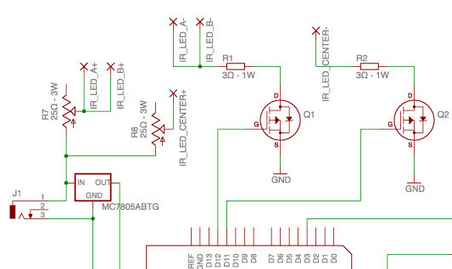shyckh
Newbie level 5
i am working on a project for which i need two set of ir leds to flicker alternatively with respect to each other with the same input frequency. the input signal is coming from the vsync of ps3eye camera. i have given the the vsyn signal to 555 timer. the output of 555 timer is being given to arduino board pin3 as an interrupt. the remaing circuit is attached. the problem i am facing is that leds would not turn off completely rather thay just dims. i want leds to be completely off if one set of leds is on. any help on it would be appreciated. also i want to know what is the frequency of v sync signal?

